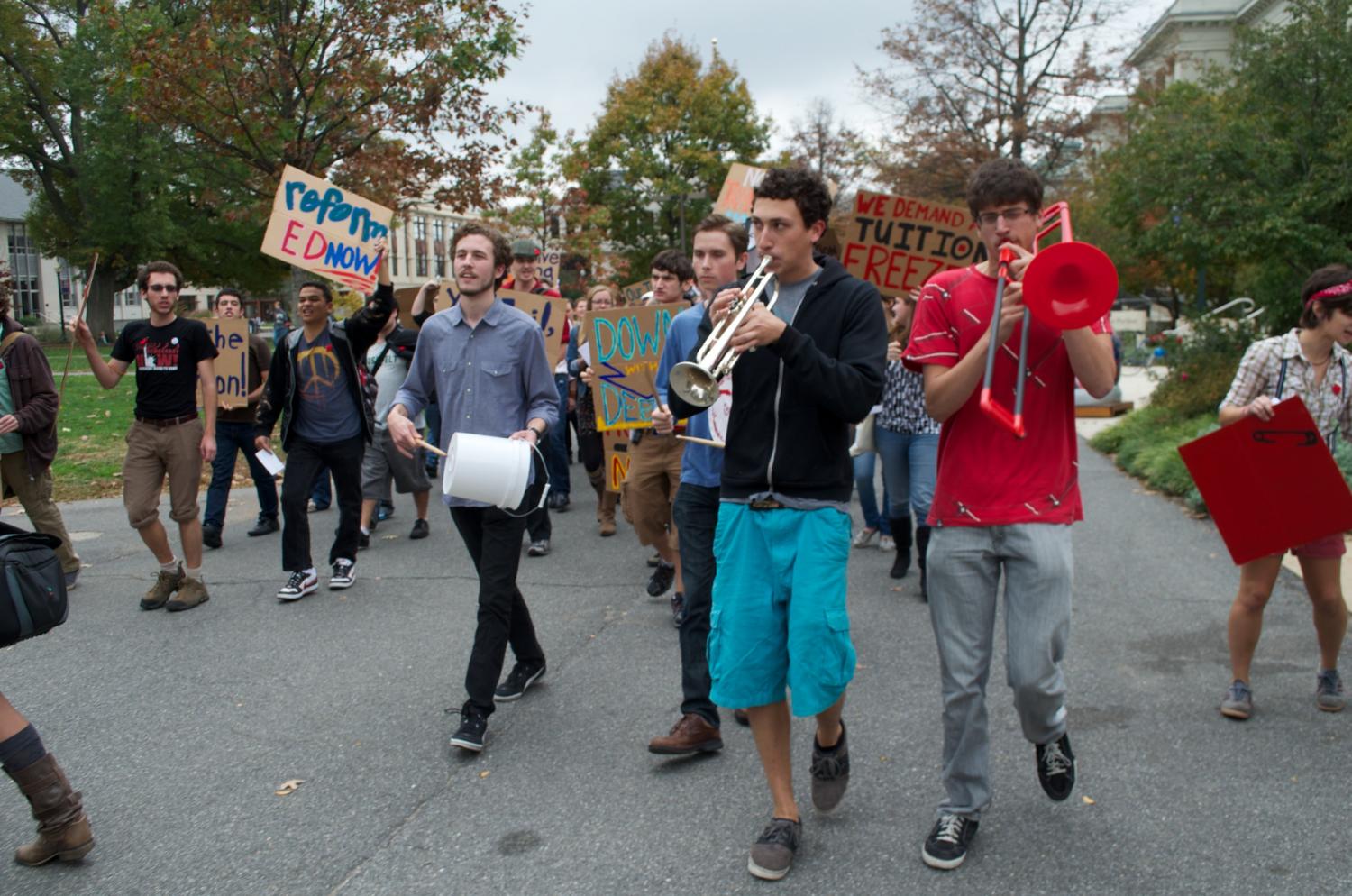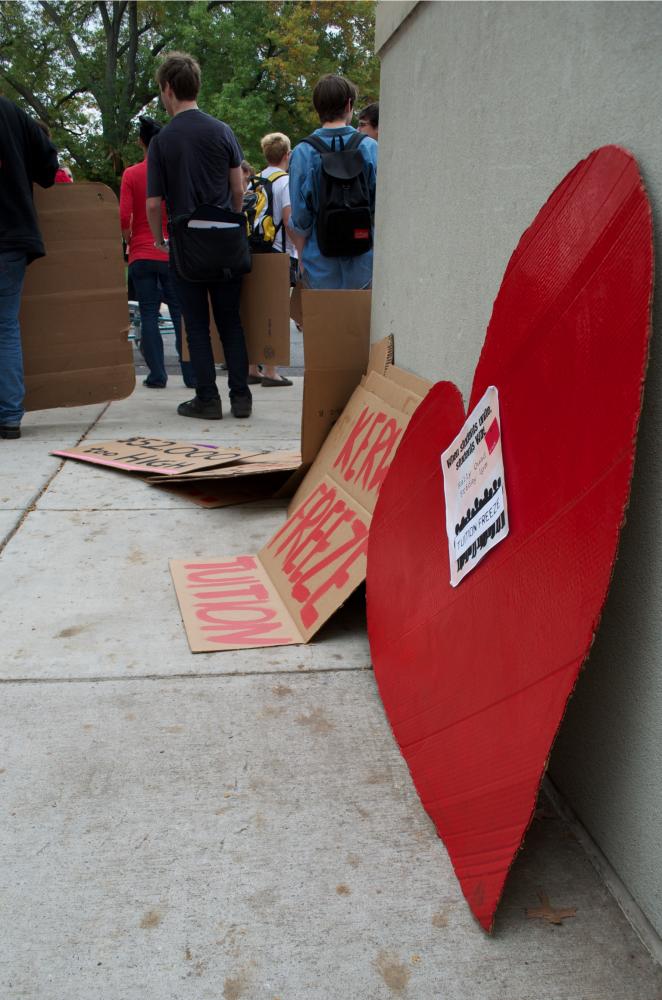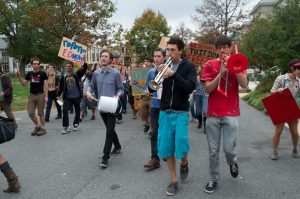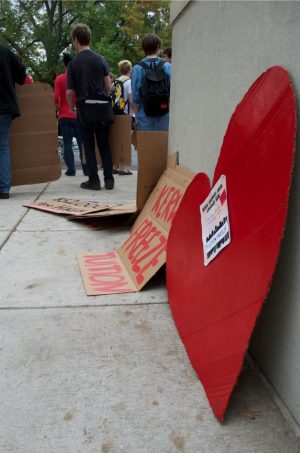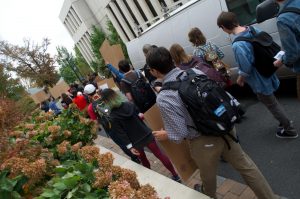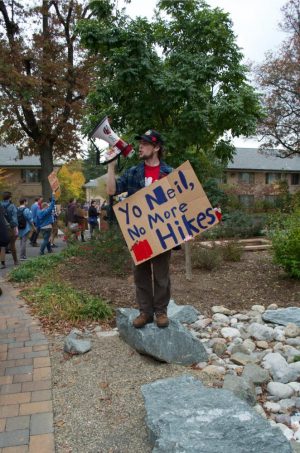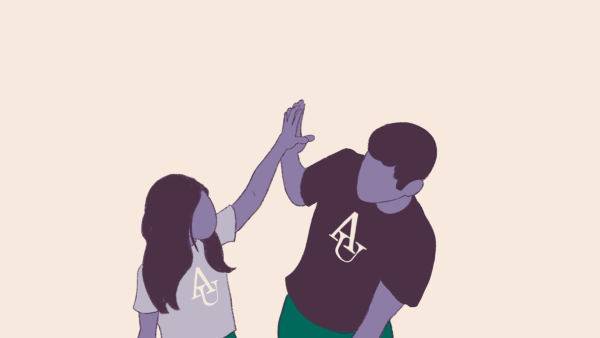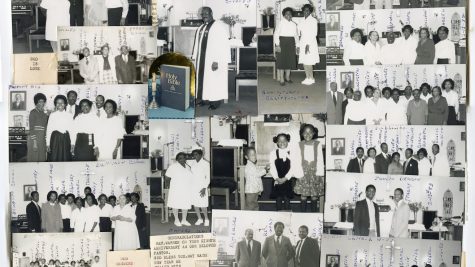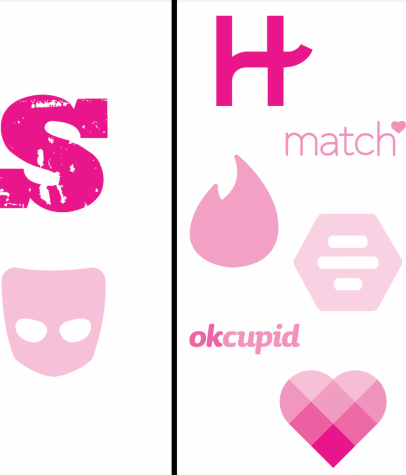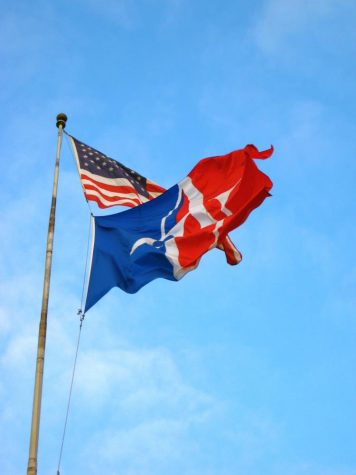Fighting for Less Tuition, More Representation
The students said they decided to hold the rally after university administration failed to respond to a list of demands and to a petition signed by over 25 percent of the student body. Members of CAUS hand-delivered the demands to President Kerwin during his kickoff speech for All-American Weekend on October 20.
“We want the administration to understand that students should have a say in the decision making at the university,” said Zachary Moore, an AU student and CAUS member. “Our petition isn’t just for a tuition freeze. It’s for collective bargaining rights for students. Both the tuition freeze and the collective bargaining were completely ignored by the administration—and we’re going to show them that we don’t like being ignored.”
Close to fifty students turned out to march—far fewer than the 1700 students who signed the organization’s petition, but plenty enough to draw the attention of anyone around campus during the time. An improvised band led the group as participants yelled, distributed flyers and motioned for onlookers to join in the rally. A handful of spectators joined in on the march, but most opted to stand by and snap photos with their smart phones or simply gape at the group as they marched by.
“Ideally we want to come up with a system where students—as the main bankrollers of the university—have a meaningful say in the policies that the administration makes,” CAUS member Paul Grobman said. Grobman pointed out that eighty percent of the university’s revenue comes from student tuition and fees, as shown clearly in the university’s publicly available budget for the 2012-2013 school year, but said he felt that students lacked meaningful representation in the school’s decision-making process.
“We want to let the administration know that we’re here and we’re serious about this,” Grobman said. “We are not just going to deliver a petition and go away. We are going to be here for the long haul to make sure that tuition hikes don’t happen.”
Both Grobman and Moore cited the student strikes and protest movement in Montreal, Quebec as one of the main inspirations for CAUS. The most recognizable symbol of CAUS, a red felt square fastened to a shirt or backpack with a safety pin, is a direct adoption of the red square symbol used by the Quebec students on strike from last February through this September. Marches through Quebec drew up to 500,000 students at a time over a hike in university tuition from $2,168 to $3,793 between 2012 and 2017.
After winding around the quad and through the campus, a delegation of 17 students marched up to Hanson’s office as the rest waited outside the entrance to Butler Pavilion. Upon arriving at the office, Hanson’s assistant told the group that the campus life vice president was out of the office at an off-campus meeting. The group left a message with a list of their demands, including a two-year tuition freeze, access to an itemized budget and collective bargaining rights for students.
“Students came out and they were here rallying—that was the biggest success,” Sophia Miyosha said. “Even though she [Hanson] wasn’t there, we’re not going to stop. This is just the beginning.”
“We’re going to keep up the pressure. We’re going to start contacting donors, alumni and faculty. Anyone who can help us put pressure on the administration—we’re going to reach out to them,” CAUS member Chris Litchfield said. “It’s important to stress that we don’t want to have to do this. The administration is pushing us into crushing poverty—and they’re okay with that. And if they’re okay with that, we need to tell them we’re not okay with them living their lives in ease while we’re living in difficulty.”
CAUS is already planning a night march on October 30, where students will gather at the amphitheater and march around campus banging pots and pans while shouting their demands. Even if the administration continually refuses to meaningfully acknowledge their demands, CAUS members don’t plan on being quiet anytime soon. While the Montreal protests included many more students, CAUS members are making up the difference with dedication to their cause and to sparking structural changes in the school’s decision-making process—and inspiring change in schools across the region.
“With student power, we can make a real difference,” Litchfield shouted through a megaphone as the rally drew to a close, “We can stop tuition hikes here and across the U.S. It starts here—and it starts with us!”
Photos by Taylor Kenkel.


